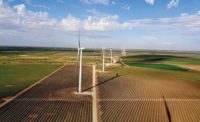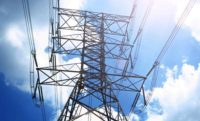The Klamath River Renewal Corp.—the nonprofit corporation overseeing removal of four hydroelectric dams on the Klamath River in Oregon and California—is optimistic the undertaking will finally go forward after the U.S. Interior Dept. indicated its support for the approximately $445-million project on April 18. The approval follows a similar okay from the Federal Energy Regulatory Commission.
The Klamath dams project, in planning for more than a decade and considered a proof-of-concept for similar large projects in the U.S., would be historic for its magnitude and complexity. “Never before have so many large dams been removed from a single river at one time in the U.S.,” the Congressional Research Service said March 3, adding that the project could be a model for transferring private dams to states or nonprofits for removal in exchange for liability protection.
The dams—J.C. Boyle in Oregon and Copco I, Copco II and Iron Gate in California—were built between 1918 and 1962. Three dams on the upper Klamath River in Oregon will continue to operate. The seven Klamath dams produce a total of 169 MW, says PacifiCorp, the dams' utility owner.
FERC is taking comments through April 25 on its draft environmental impact statement (EIS) released in late February that found removing the dams has environmental and public benefits. Commission staff recommended transfer of the dam’s operating license to Klamath River Renewal Corp., and to Oregon and California—which is needed before removal can begin.
“The project has more momentum now. We’re optimistic and have a sense of inevitability,” Mark Bransom, CEO of the non-profit, told ENR. The project has been under consideration and debated since 2010.
Interior called FERC’s draft review “thorough and robust,” adding that it “carefully considers the potential environmental effects of [the] proposed action.” The department said it would approve the removal with “moderate modifications.”
If FERC issues the final environmental signoff as expected by September, and other permits are obtained by year end, Klamath River Renewal Corp. expects construction to begin in 2023. Full project design is set to finish by June.
The removals still await a federal Clean Water Act permit from the U.S. Army Corps of Engineers, federal historic preservation approval developed with Tribes and the FERC order to transfer the dams’ operating license from PacifiCorp to the nonprofit.
Under a progressive design-build contract signed in April 2019 with the non-profit, Kiewit Infrastructure West was selected to remove the four dams.
The contractor developed a provisional guaranteed maximum price of $190 million, says Bransom. A final GMP has not yet been determined. The project includes restoration of 8,000 acres now inundated by the dams, which is expected to cost up to $100 million.
Early enabling construction will begin in the first quarter of 2023 and major dam removal will begin in June 2024. Heavy civil firm Knight Piesold, which specializes globally in hydropower and mining services, is the engineering subcontractor. Texas-based Resource Environmental Solutions is the project’s restoration contractor.
The removal project stems from a 2016 settlement by Oregon, California and PacifiCorp reached after years of squabble over environmental conditions. The project will allow the river to flow freely with fish passage restored for about 400 miles upstream.
The removal non-profit and the project are funded by $184 million in PacifiCorp utility surcharges in Oregon and $16 million in California, with $250 million in bond funding also from California.
"The FERC recommendation to advance the dam removals sets a path for a more sustainably managed river — something we haven’t seen for more than a century. It won’t solve every problem in the Klamath Basin, but it bodes well for the future," said California Rep. Jared Huffman (D), in an online statement. "Klamath dam removal will be the largest salmon restoration project in history. Removing these obsolete dams will help restore iconic salmon without reducing water supply."
But "the loss of water and power will have huge negative effects" on residents of Siskiyou County in the far northern part of the state, California Rep. Doug LaMaffa (R), who has opposed the removals, told E&E News, adding that sediment released during dam removal will harm fish spawning areas.
Bransom said most comments submitted to FERC opposing the project were based on the misperception that the dams have controlled reservoirs, when in fact they are not used for water supply or irrigation. The Klamath dams are what is called "run of the river" dams, which do not hold large quantities of water in reservoirs.





